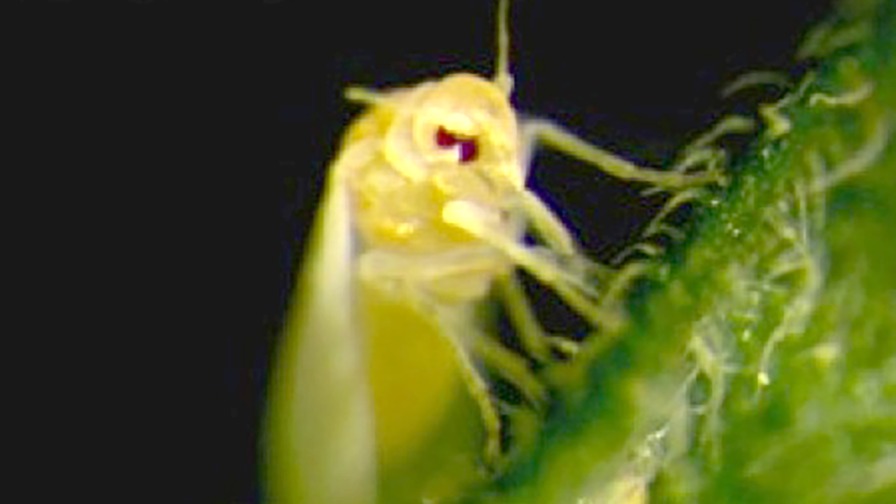Georgia Whitefly Populations Explode, Troubling Vegetable Growers

Adult whitefly is feeding on a tomato leaf. Photo credit: Saioa Legarrea, University of Georgia.
Whitefly populations in South Georgia have exploded over the past several weeks, troubling vegetable producers during the fall growing season, according to University of Georgia horticulturist Tim Coolong.
Coolong said growers must be up-to-date on spray programs, though combating whitefly populations of this magnitude will still be difficult. In some cases it might be impossible to stop whiteflies before they spread viruses.
Whiteflies feed on plants by sucking juice out of the leaves. They can transmit viruses that are devastating to vegetable crops. Babu Srinivasan, an entomologist at the University of Georgia Tifton Campus, said that the silvering of leaves in cucurbits is a problem associated with feeding damage. The flies suck chlorophyll and other cell contents from leaves, which could reduce fruit set.
“Aside from silvering of leaves in cucurbits, whiteflies cause irregular ripening of tomatoes, which reduces market value and is only evident after harvest,” Srinivasan said. “The most important thing, however, is that they can actually transmit viruses.”
“Because they have multiple hosts, are very small and capable of flying — and the fields are located very close to each other — there is no practical way to completely get rid of them,” Srinivasan said.
There are some ways to mitigate feeding damage, according to Srinivasan. He said that growers could use reflective mulch to make it harder for the whiteflies to land on the plants. The seedlings can also be drenched with insecticides before being planted.
Srinivasan said that climate and weather patterns are huge reasons why whitefly populations are so high. He said the warm winter and lack of rainfall in early summer could be reasons for this explosion.
Source: University of Georgia










